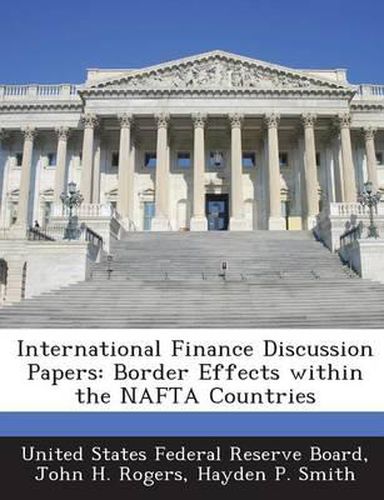Readings Newsletter
Become a Readings Member to make your shopping experience even easier.
Sign in or sign up for free!
You’re not far away from qualifying for FREE standard shipping within Australia
You’ve qualified for FREE standard shipping within Australia
The cart is loading…






Using consumer price indexes from cities in the U.S., Canada and Mexico, we estimate the \“border effect\” on U.S.-Mexican relative prices and find that it is nearly an order of magnitude larger than for U.S.-Canadian prices. However, during a very stable sub-period in Mexico (May 1988 to November 1994), the \“width\” of the U.S.-Mexican border falls dramatically and becomes approximately equal to the U.S.-Canadian border. We then show that when consideration is limited to cities lying geographically very close to the U.S.-Mexican border–San Diego, Los Angeles, Houston, Dallas, Tijuana, Mexicali, Juarez, and Matamoros–the border width falls compared to that estimated with the full sample of U.S. and Mexican cities, but falls only very slightly. We also present evidence that the border effect in U.S.-Mexican prices is not primarily due to the border effect in U.S.-Mexican wages. Finally, using the prices of 276 highly dis-aggregated goods and services, we estimate the variability of relative prices of different items within Mexican cities. This measure of relative price variability declines during the stable peso sub-period, but by less than the decline in nominal and real (i.e., CPI-based) exchange rate variability. Our results are strong evidence of a \“nominal border effect\” in relative prices within NAFTA, but also indicate that real side influences are important.
$9.00 standard shipping within Australia
FREE standard shipping within Australia for orders over $100.00
Express & International shipping calculated at checkout
Using consumer price indexes from cities in the U.S., Canada and Mexico, we estimate the \“border effect\” on U.S.-Mexican relative prices and find that it is nearly an order of magnitude larger than for U.S.-Canadian prices. However, during a very stable sub-period in Mexico (May 1988 to November 1994), the \“width\” of the U.S.-Mexican border falls dramatically and becomes approximately equal to the U.S.-Canadian border. We then show that when consideration is limited to cities lying geographically very close to the U.S.-Mexican border–San Diego, Los Angeles, Houston, Dallas, Tijuana, Mexicali, Juarez, and Matamoros–the border width falls compared to that estimated with the full sample of U.S. and Mexican cities, but falls only very slightly. We also present evidence that the border effect in U.S.-Mexican prices is not primarily due to the border effect in U.S.-Mexican wages. Finally, using the prices of 276 highly dis-aggregated goods and services, we estimate the variability of relative prices of different items within Mexican cities. This measure of relative price variability declines during the stable peso sub-period, but by less than the decline in nominal and real (i.e., CPI-based) exchange rate variability. Our results are strong evidence of a \“nominal border effect\” in relative prices within NAFTA, but also indicate that real side influences are important.